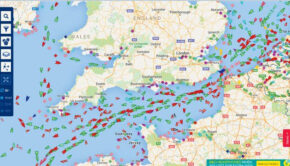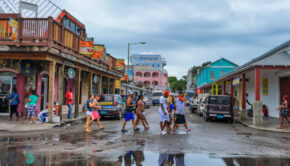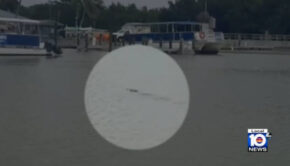Reducing the Risk in Offshore Racing
Published on March 27th, 2014
The 2014 offshore season got underway for San Francisco Bay on March 22 with a doublehanded race to the Farallon Islands. Sitting 30 miles beyond the beyond the Golden Gate Bridge, the Farallones gained national attention in 2012 when five of eight crew perished after waves pummeled the Sydney 38 Low Speed Chase.
Commenting on the heightened safety focus, and its impact on participation, is Singlehanded Sailing Society Commodore and Offshore Yacht Racing Association Director Jim Quanci …
The Doublehanded Farallones race has had shrinking attendance (or maybe best said “modest” participation compared to many moons ago) from long before the increase in safety requirements added in this last year. As had most of our Ocean races. It’s just as likely attendance in the DH Farallones is off a bit because people have been dying out there.
For every person I have heard complain about the increased safety requirements, I have also heard people saying their spouse told them they cannot go because it’s not safe. That said, reality is its more likely race participation is about people being busy and ocean sailing being time consuming.
Big picture…
Over a very long period of time, we’ve averaged just over one death per year among crew participating in NorCal Ocean Races – across all the various races including Doublehanded Farallones, Singlehanded Farallones, Crewed Farallones, OYRA races to various locations in the Gulf of the Farallones, Windjammer, etc. To put that in perspective, out of every 4000 people that go under the Golden Gate Bridge in an ocean race (organized race), one will die (4000 is about the number of people that pass under the gate in an ocean race each year).
Sure it happens in fits and starts – not one per year – but over 30 years it’s a pretty consistent pattern that without change was going to continue. To make it real, imagine you have a revolver with 4000 chambers in it, and with a bullet in just one (ala Russian roulette). Every time you went under the Gate, every crew on every boat would put this revolver to their head and pull the trigger. Do you think this is too risky? I sure do.
The Low Speed Chase tragedy in the 2012 Crewed Farallones Race brought focus to this ongoing safety issue. All the great research done uncovered a handful of changes that could be made that would likely reduce the risk of death in a NorCal ocean race by a factor of 10x – at less than the cost of a working jib.
Having the right PFDs, use of harnesses and jacklines, good VHF installations and DSC with GPS, four hours of training and a few other bits will get us there. Sounds like a great investment to me – and again no real evidence this will significantly impact race participation. It might increase participation long term as less people get scared away by “yet another death in an ocean race”.
As a side note, the safety equipment requirements to participate in most NorCal Ocean Races has been reduced by near half today compared to three years ago – as we focus on safety equipment and training that really saves lives – and have removed the “nice to have but not proven to save lives” requirements.
Last…
My crew and I have been in races these last five years in the Gulf of the Farallones where ten people across three boats ended up in the water – and seven died. We all should really, really want this not to happen again in the coming five years. It’s possible all seven deaths would have been prevented if we knew what we know today and were using today’s safety equipment and training requirements. To ignore all this is inhumane (or dare I say “stupid”).









 We’ll keep your information safe.
We’ll keep your information safe.